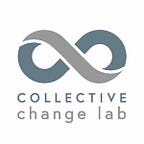Storytelling as Meaning-Making
Written by Cynthia Rayner & John Kania
Compiled and edited by Tad Khosa and Katherine Milligan
Nearly a year ago, we set off on a journey to discover how Storytelling can help us transform social systems. We had a hunch that stories of heroes and super-charged change efforts were not serving the social sector well, and that somehow, the way we were telling stories of change was holding us back from creating real change.
Prior to this project, we had experienced disillusionment with collective change efforts that created short-term incremental successes while long-term transformation remained elusive. We had witnessed how deep-seated narratives were prone to surfacing even when groups experienced small wins, often creating subsequent divisions and setbacks. We felt a call to, as Ella Saltmarshe writes, “develop new processes of collective storytelling to help us navigate these turbulent and polarizing times.”
We knew that we didn’t have answers and set out to find fellow travelers who could help us make sense of what we were seeing. We were joined in a Community of Practice (CoP) by a group of ten intrepid Storytellers from diverse cultures, geographies and genres. We learned quickly that we would have to go slow to go fast and that we would need to be emergent and present to understand the real power of stories.
Learning 1: Storytelling is arguably humanity’s oldest social change tool
Early in our journey, we learned to navigate by the stars. One of our CoP members, Nayantara Sen, introduced us to a metaphor that helped clarify how Storytelling fits into the broader genres of narrative and cultural change. She quoted her colleagues Jeff Chang and others, saying that stories are like individual stars, narratives are constellations of stories, and cultures are like huge, expanding galaxies. Individual stories by themselves cannot drive change, but when they are linked together, they can immerse us in new narratives that can shift culture in profound ways.
Storytelling is humanity’s oldest “technology” to create social change. Alain de Botton writes, “The difference between hope and despair is a different way of telling stories from the same facts.” When we narrate our histories and activate our imaginations, we foster a process of collective meaning-making. Meaning-making is the way we selectively choose information, sequence it, bound it (identify a beginning, middle & end), and then use this interpretation to identify courses of action. Most importantly, when we tell stories together over time, we activate collective agency, the ability for groups to cohere and create a shared future.
However, in a world which has become globalized and dominated by a single economic model, a specific type of Storytelling has become dominant. Modern, capitalistic Storytelling often features linear storylines and heroic actors overcoming problems. This has become the dominant way of crafting stories in many industries and sectors, including the nonprofit/social sector.
Lesson 2: Storytelling is Sense-making
Heroic story structures are often used to influence and “sell” rather than cohere: they position individuals and organizations as powerful agents who address social challenges through single solutions. These stories reinforce existing power narratives about who and how social change should happen, ultimately limiting the set of options available for systems change.
Systems approaches require many stakeholders, often with differing viewpoints, to come together over long periods of time to affect change. Heroic, linear narratives are particularly dangerous for complex, systemic issues because they prioritize single solutions, often from privileged actors. We need to revitalize Storytelling practices that keep groups together while learning: considering viewpoints, testing and experimenting, evaluating, learning from failure and trying again.
In our CoP, we revealed four additional purposes of Storytelling, all of which focus on meaning-making:
- Storytelling is Connection: When we tell stories together, we become cognitively and physiologically attuned to each other. Our brains and bodies were built for Storytelling in community.
- Storytelling is Understanding: When we listen to stories told by others, we become mentally and physically receptive to understanding diverse experiences and perspectives.
- Storytelling is Power: Power is reinforced and transformed by stories. We choose protagonists, sequence, timeframes, and other elements that advance certain behaviors and perspectives over others.
- Storytelling is Healing: Our individual and group histories are narrations etched over memories. We can change these narratives to heal individually and collectively.
Lesson 3: Storytelling is about practice as much as product
In our jobs and professional lives as storytellers, we are often (and almost exclusively) focused on the end product. For each of us, these products are different: documentary films, books, short stories, music lessons, case studies, visual artforms, poetry, podcasts, strategic narratives, and journal articles. These products are invariably crafted to impart specific information and drive a specific agenda.
However, as our CoP progressed, we became attuned to the work that we were doing together: experiencing Storytelling as a practice rather than a product.
We found respite in focusing each month on the process of Storytelling itself — contributing ideas, experiencing each other’s work, reveling in the use of language and metaphor, and offering personal reflections. Through this process, we — slowly and surely — moved toward greater understanding of Storytelling as a way of making sense of complexity. Storytelling helps us to understand different parts of a system, including their past, present and future. It is a practice that allows groups to make meaning together over time.
The themes included in the subsequent chapters include emerging thinking, questions we are exploring, as well as things to try in your own Storytelling practice. In our next phase, we will be testing Storytelling as a meaning-making practice with several collectives who have agreed to journey with us.
There is still much to learn, but we look forward to experimenting with others and sharing these experiences with those who journey alongside us. We would like to share our emerging learnings from the systems storytelling initiative in this compendium.
